#osh tisch
Explore tagged Tumblr posts
Text
A warrior, artist, and incredibly valued person in the Crow nation, Osh-Tisch was a baté person and is remembered as one of the last baté people to have existed before colonizers committed genocide against this part of Crow culture. A baté person is a person who is born with a body that many European cultures of the time designated as male, and later is discovered to be a woman and is accepted as a woman in Crow culture.
Support Making Queer History on Patreon
Send in a One-Time Donation
348 notes
·
View notes
Photo
I would also like to add a very famous picture of We’wha, a Zuni lhamana (two spirit) person from what is modern day New Mexico, this picture was taken circa 1886

As a reminder that gender diversity and queerness has been an especially important precolonial part of cultures across the world. We’ve not only always been here but we’ve always been loved and had our spaces in our communities

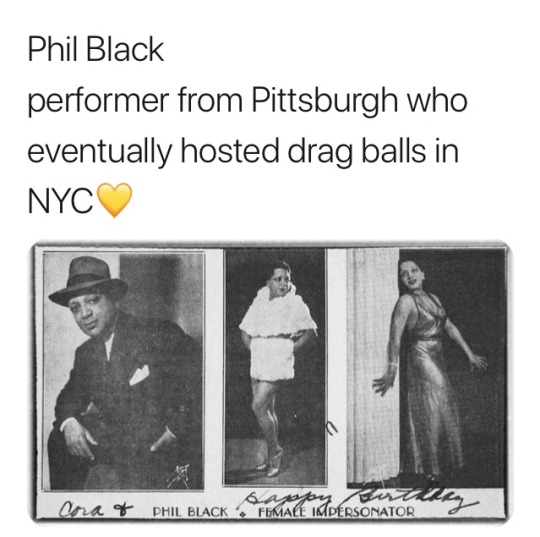



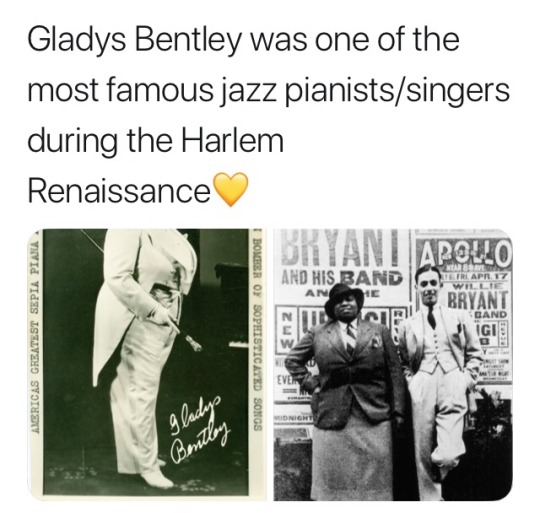
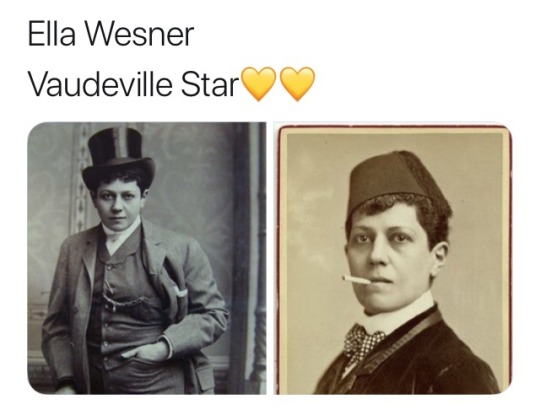
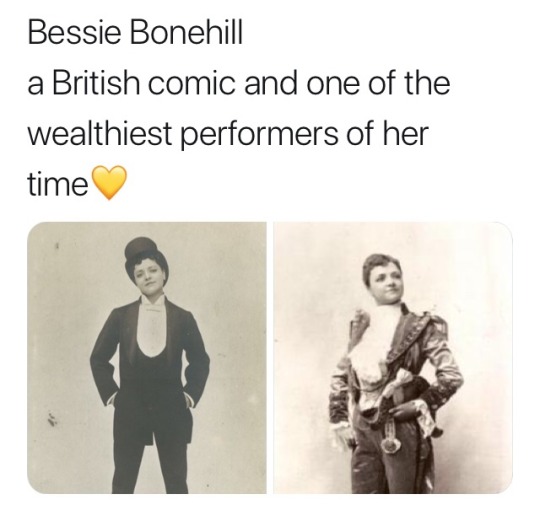
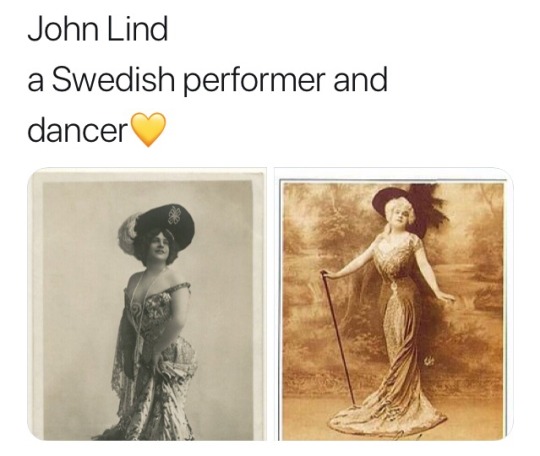

Gorgeous thread this morning on Twitter by @jeffreymarsh!
#you can also search up people like Osh Tisch and Hastiin Klah#i would like to remind people that a lot of antitrans rhetoric has especially harmed black and Indigenous communities across the world#kar post#(for once)
75K notes
·
View notes
Text




Celebrating Indigenous Peoples' Day!
Today the USA marks Indigenous Peoples' Day - to celebrate, have a listen to these podcasts to learn some of the Indigenous, queer history of what is now the USA.
Osh-Tisch
Osh-Tisch was a batée born in the mid-19th-century Crow Nation. Batée is a uniquely Crow gender identity, describing a person assigned male at birth, who performs female as well as specifically batée social roles. Osh-Tisch was renowned for their skills as a craftsperson, their bravery in the 1876 Battle of the Rosebud, and as the best poker player in the region. In the face of attempts by the US government to force assimilation to Western ideas of gender, Osh-Tisch’s community fought for their right to express their identity.
[Image source: Will Roscoe’s Changing Ones: Third and Fourth Genders in Native North America]
We'wha
Born c.1849 at Zuni (now in New Mexico), We’wha was a lhamana - a Zuni gender including both masculine and feminine roles. Like many lhamana, We'wha was a highly skilled craftsperson, proficient in both traditionally masculine, and traditionally feminie crafts. In 1885, We’wha travelled to Washington DC as a representative of the Zuni people, where they worked with anthropologists and the Smithsonian museum to demonstrate and share information about Zuni crafts and culture, and met US President Grover Cleveland.
[Image source]
Bíawacheeitchish
Born in the early 1800s, Bíawacheeitchish (Woman Chief) was a Gros Ventre woman who lived amongst the Crow people. She was skilled in traditionally masculine pursuits like riding, hunting and warfare. Polygamy was common amongst the Crow, and Bíawacheeitchish married four women. Her military prowess led to her becoming one of the most respected Crow chiefs.
[Image source]
Kapaemahu
According to Hawai'ian oral histories, in around the 1500s, four healers visited Honolulu from what are now the Society Islands. These healers - named Kapaemahu, Kahalao, Kapuni, and Kinohi, were māhū, a gender recognised in Kānaka Maoli (Native Hawai’ian) culture, with a particular focus on healing and caring roles.
When they departed Hawai'i, the four māhū left behind four huge stones as a memento of their visit, imbued with their healing powers, which are still revered in Hawai'i today.
[Image source]
#indigenous peoples day#indigenous history#crow history#hawaiian history#zuni history#queer history#two-spirit#two-spirit history#lgbt history#lgbtq#native american history
553 notes
·
View notes
Text

OSH-TISCH (CROW) ... TRANSGENDER ...
Osh-Tisch, or “Finds Them and Kills Them” (1854-1929) was a respected warrior among the Crow, who fought Lakota in the Battle of Rosebud. Osh-Tisch was the spiritual leader of the Boté, which is a Crow term describing a person whose gender identity was different than their assigned at birth sex. Osh-Tisch was male-bodied who lived as a woman, and had accomplishments in feminine crafts ... On reservations, Christian missionaries from the BIA enforced strict Western gender ideals ... These agents attempted to make Osh-Tisch dress in male clothing, cut off the hair of the Boté, and force them to work traditionally masculine labor. The agents were eventually driven out, and Osh-Tisch remains a respected figure among the Crow, yet Christian influences have diminished the role of gender fluid and LGBTQ+ indigenous people.
35 notes
·
View notes
Text

Artist (Chicome Itzcuintli Amatlapalli) statement: A Baté is what is today known as a two-spirit person, who are assigned male at birth but take on the clothing and work of women as they age. A famous Crow Baté was Osh-Tisch, also known as Finds Them and Kills Them. She was celebrated among her tribe for her bravery when she attacked a Lakota war party and saved a fellow tribesman in the Battle of the Rosebud on June 17, 1876. The Baté were a respected social group among the Crow. They spent their time with the women or among themselves, setting up their tipis in a separate area of the village. They called each other ‘sister’ and saw Osh-Tisch as their leader.” The elders also told the story of former B.I.A. agents who tried to repeatedly force her to wear men’s clothing, but the other tribespeople protested against this, saying it was against her nature.
Artist's shop here.
13 notes
·
View notes
Text


From IndigenousAction on Instagram~
#two spirit#twospirit#2S#indigenous#OSH-TISCH#before stonewall#anti colonialism#not gay as in happy#indigenous issues#indigenous action
660 notes
·
View notes
Photo

Queering Up History: Osh-Tisch
[Image Description: A stylized portrait of Osh-Tisch, a Crow badé with a medium complexion and long, dark hair.]
❤️ Patreon 💛 Insta 💚 Facebook 💙 Coffee 💜
35 notes
·
View notes
Text
History Bites: Bad Ass Moments (Women)

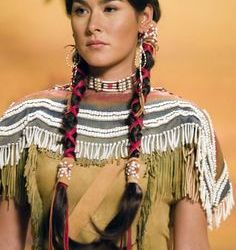

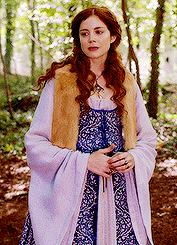

In History Bites, I pick the best moments of history and the antics historical figures in order to give you inspiration for your WIP. Think of History Bites like prompts, only juicer and 90% accurate (results may vary).
Today, we will discuss the bad ass moments of history (women). This post may have a part two. Let's get to it.
Arsinoë IV was the younger sister of Cleopatra. During the civil war between her elder sister and brother who were meant to be jointly ruling, Caesar besieged Alexandria on behalf of Cleopatra, taking the royal family hostage within the palace. In the confusion after the Library of Alexandria was accidentally burned down (I mean Caesar, I love you but you're fucking dick for burning the library), Arsinoë escaped the palace and took command of the Egyptian army. Under her control, the army enjoyed success even trapping Caesar as he tried to take the Lighthouse of Alexandria. This was an important symbol to the city as well as a masterful weapon, whoever controlled the Lighthouse controlled the harbour. To escape, Caesar had to swim across the bay throwing off his great purple cloak and fine armour, holding up his important papers as he limped back to dry land, defeated by a 15-18 year old girl.
Katherine of Aragon handed Scotland its biggest defeat in history. She led troops at Flodden, winning a battle where the Scottish King died. When she wrote to Henry as well as sending him the Scottish king's coat and banners, she mentioned that she had wanted to send the body of the king but the nobles were being pussies and said no. It may have been the shadiest letter of all the Tudor period.
Artemisia Gentileschi was one of art and history's all time bad asses. She was a skilled painter at a time when women were not permitted to attend art schools. She surpassed her father's own works and some of his other students. At 18, she was raped by another artist. In a time far behind today's understanding of rape and justice, Artemisia took a great risk in publicly accusing her rapist. She underwent numerous tortures so the judges could be sure she was telling the truth. The rapist was convicted (a major win). Artemisia went on to become one of the Baroque period's most powerful painters.
Marguerite de Bressieux was a 15th century noblewoman in France. When her father's castle fell to the armies of the Prince of Orange, Marguerite and the other women of the castle were all sexually assaulted. As the French army passed through the devastated lands, they came by a group of twelve knights armoured and mounted, bearing a black banner with an orange pierced by a spear. The commander revealed their face... it was Marguerite. She asked to join the French King's forces and he allowed her though he was quite taken aback. At the Battle of Autun, each of the female knights and Marguerite hunted down the Prince of Orange's men, unmasking their faces before they killed their rapists so they would know just had come.
Harriet Tubman was an American slave who ran the Underground Railway, ferrying slaves off to freedom. After escaping herself, Harriet refused to leave others behind. Known as Moses, Harriet risked life and limb to free slaves from the plantations. During the Civil War, she worked for the Union first as a cook then as scout and spy. Over her life, Tubman released over 300 slaves.
Countess Constance Markievicz was the first woman to be elected to a British Parliament ... while imprisoned for her art in the numerous acts of rebellion in the last years of English rule. Markievicz was one of the figureheads for Irish freedom, even acting as a sniper during the 1916 Easter Rising. When the rising was over, she was imprisoned but not executed (being a woman and a high status woman) which made her angry. She believed that the fight for Irish freedom was not just a male one. Her advice to women and girls of the time was "Dress suitably in short skirts and strong boots, leave your jewels in the bank, and buy a revolver"
Grace/Grainne O'Malley, the Pirate Queen of Ireland was one of the Lords of the West of Ireland. On her father's death, she inherited his lands and fleets as his heir, turning her into one of the most powerful lords of the west. She fought in the Nine Years War, becoming a thorn in the side of the "Governor" Richard Bingham. When her sons and half brother were captured and threatened, Grainne turned her sails to London to speak with Elizabeth I. Grainne did not bow to Elizabeth and began hammering out the terms of a peace. Bingham was fired, her sons and brother were released on the terms that Grainne would stop supporting Gaelic uprisings. Grainne didn't.
Jeanne de Clisson or the Lioness of Brittany, was a 14th century noblewoman. Her husband was imprisoned by the French King who suspected him of being a spy who had lost a battle on purpose. He was executed. Jeanne went immediately to the fort her husband had commanded. The garrison let her in. Jeanne's army took the fort. By the time the French King heard, Jeanne was gone. After a treacherous crossing over the Channel where she lost at least one child, Jeanne resurfaced in England. The English king granted her three ships which she used to wage war on France in revenge.
Ching Shih was a Chinese pirate queen, formerly a prostitute. When her husband died, she took over his fleet of ships. Ching Shih went about on tightening the reigns on her sailors. They could not rape captives, if they did they were beheaded. If they wanted to have one of the women, a sailor had to marry her and treat her right. To disobey a superior twice was death. As she got the fleet into shipshape, Ching Shih began her reign of the seas amassing millions. The government fought her a few times but soon gave up their war, paying Ching Shih to go away. She retired as a respected millionaire.
Osh-Tisch or "Finds Them and Kills Them” was a Native American warrior. She had been born male but chose to live as a woman also known as a baté, a person which two souls in their body. Osh-Tisch took up arms along with the other batés when her tribe went to war with the Lakota, winning the war. As missionaries came to to stick their noses in where they weren't wanted, Osh-Tisch and the other batés were subject to horrific abuse. Batés were forced to dress and act as their assigned gender by the dickheaded missionaries. Osh-Tisch disregarded the missionaries and continued to work with batés across America in order to support one another.
Harriet Tubman escaped from slavery in the years preceding the Civil War. Harriet refused to leave others behind and returned about nineteen times to volatile south to rescue slaves, under the name Moses. During the war, Harriet served as cook, nurse and spy for the Union. Harriet saved over 300 slaves.
Matilda, Lady of the English once escaped a besieged castle. How did she do this? She walked out of the gates and left. She was wearing a white cloak which camouflaged her against the snow. She walked eight miles in the snow to continue her fight for the crown.
Cleopatra VII (that Cleopatra) was once summoned to Tarsos go meet the new Governor of the Eastern Provinces of the Roman Empire, Mark Antony who wanted to borrow some money. They negotiated back and forth on who should come to who. Cleopatra refused to go... but then showed up in Tarsos on luxurious barge. While feasting with Antony at his expense, Cleopatra claimed that she could host the more expensive meal. She dropped a pearl earring into her wine, where it dissolved and downed it like a queen.
Caterina Sforza was an Italian noble woman in the Renaissance period and you could literally not find a bigger bad ass. She rode at the head of an army to occupy the great fortress of the Castel San Angelo in the name of her husband, while being seven months pregnant. At the siege of Ravaldino, Caterina and her children were prisoners of the treacherous Orsis family who had killed her husband. Caterina persuaded the commanders to let her enter the city to negotiate the surrender of the castle. One inside, she climbed the battles and cussed out the besiegers. Utterly stunned, one commander threatened to kill her children but Caterina lifted her skirts and flashed them, claiming she could make more. OK, that may be a rumour. She may have touched her belly or claimed to be already pregnant but still it was a moment. It ended up buying her enough time for more forces to come and beat the army outside.
Catherine the Great born a minor German Princess overthrew her husband Peter III in a successful military coup. A few days before the original coup was going to commence, a co-conspirator let slip to another guard that it was happening. The man was arrested. When the news got to her, Catherine left the palace via carriage commandeering horses along the way. She went to the barracks of the Ismailovsky regiment dressed in burrowed military uniform and made an impassioned plea to the soldiers to earn their support which they gave her. She was crowned sole ruler of Russia and forced her husband to sign his crown away.
Khutulun, the great-grandaughter of Genghis Khan was badass from the beginning. She was the only girl in a family of boys and grew up to be the fiercest. Khutulun was a highly sought after bride. She didn't hate men but felt she shouldn't be married to somebody unequal to her. Every man who sought to wed her had to wrestle her or pay ten horses. She had ten thousand horses by the time she died.
Boudicca was the Queen of the Iceni, a Celtic tribe in England. Her husband, an ally of the Romans, left half his kingdom to Rome and the other half to his daughters. When he died, Rome took it all. When Boudicca spoke out against it, she was flogged and her daughters were raped. Boudicca decided that it was time for the Romans to fuck off and die. Raising a massive host, Boudicca burned three major Roman settlements down Londinium (London), Verulamium (St. Albans) and Camulodunum (Colchester). She was the greatest threat the Rome since...
Amanirenas, Queen of Kush was an African Queen who fought the Romans. Kush lay south to the new conquered Egypt, which meant it was next on Rome's agenda. Kush moved first. Though one-eyed, she was an able warrior who survived at least a dozen battles. Though the Romans burned the capital and took slaves, Amanirenas still fought on bringing Rome to its knees. Rome and Kush signed a peace treaty, preventing Rome from crossing the border ever again. Amanirenas's badass moment came thousands of years after when archeologists were digging up the tombs. Found under her the foot of statue, was the head of the Emperor Augustus.
#tw: rape#tw:sexual assault#writing resources#history bites#badass moments of history#writing advice writing resources#writing reference writing resources#writing advice#writing reference#writer's problems#caterina sforza#Katherine of Aragon#Amanirenas#boudicca#grace o'malley#Catherine the Great#Cleopatra vii#arsinoë iv#artemisia gentileschi#Jeanne de cousin#ching shih#countess markievicz#harriet tubman#Marguerite de bressieux#khutulun#osh-tische#baté#Matilda lady of the English#fantasy guide#fantasy prompts
947 notes
·
View notes
Text
Osh Tisch (Finds Them and Kills Them) and The Public Universal Friend exist on opposite ends of the Trans Name Spectrum.
3 notes
·
View notes
Note
as for trivia stuff (which i will relate to wynonna earp)... do you know anything about the first nations? i kind of would love to see more of that on the show. i think aboriginal culture was mentioned maybe twice? the ep w/ the bear and i think we were supposed to see the blacksmith as part of the first nations? anyways, any interesting facts you know about first nations?
okay. so i know i know more trivia facts than these, but i blanked. so you can have 1 true trivia fact, 2 myths/legends originating from indigenous people, and 3 badass historical indigenous people to look up or maybe ask me about later:
here is the trivia fact related to aboriginal people in australia for you: despite the common myth, kangaroo does not mean “i don’t know” in aboriginal. bc first off aboriginal isnt a language or even a single fucking group. in 18th century australia there were at least 700 tribes speaking as many as 250 different languages. the word kangaroo (or gangaru) is from the guugu yimithirr language of the people who lived by Botany Bay. it means large grey/black kangaroo. big surprise. but the english used the word to refer to any kangaroo or wallaby, not just the specific one to which the people of Botany Bay were referring.
it goes further though. bc the origin of this misconception is when the English went up to the Baagandji people 14 hundred miles away and used this word. even though the people there didnt /speak/ guugu yimithirr, the Baagandji people reasonably interpreted this word as “an animal that hasn’t been seen before” bc i mean it makes the most sense. they used the word to describe the English’s horses, which they had never seen the likes of before.
here’s one myth: associated with the Tupi people, a major indigenous group in Brazil about a mermaid named Iara. well, mermaid after a sort. Iara grew up in a tribe that lived in the Amazon, the pride of her people, the best warrior, the smartest person, the most beautiful, and the daughter of the spiritual leader. she had two brothers who grew jealous of how much she overshadowed them in every way. so they decided to get down with some murder to solve their problems. they waited until she was asleep, bc theyre big brave warriors but also bc they knew if she was awake that she could take them. only they were only half right. she killed them both in self defense while still half-asleep bc she was that rad. only no one listened when she said it was in her defense, that they were trying to kill her. so her dad let the tribe hunt her down. she escaped for a while, but eventually with the whole tribe hunting her she was caught and drowned in a river. the fish, however, thought she was p rad so they turned her (dead body btw. she died. real dead. all the way. not even “mostly” dead. full stop dead dead) into a half-fish half-human. she was the first of the Iara, a whole group of mermaids that lived in Amazonian rivers. they (and Iara herself first) would entrance men so completely with their singing/general beauty and awesomeness that men would be lured to them/her. and what happened next differed. you either were drowned and eaten, or turned into a brainwashed member of their/her harem and treated fairly decently for a brainwashed harem member. if a man did escape, the Iara’s beauty would leave them literally insane.
this myth probably was a result of co-mingling of indigenous beliefs and european influence. but, as i said before, it is closely associated with the Tupi people
the second myth: this time from Mayan culture. This one relates to another myth, but the backstory is what we’re talking about here. so the other myth, to provide some reference point, is another myth that is about a demon who is the spirit of a beautiful young woman. who seduces men and kills them. bc who doesn’t love a good siren mythos? but the origin of this siren-esque mythos is interesting, much like the myth of Iara. we start with the typical virgin/whore dichotomy. this time in the form of two beautiful sisters, Utz-Colel and Xkeban. which mean “good woman” and “sinner” respectively and also inventively. i think you can figure out who was the virgin and who was the whore in this dichotomy for yourself. but! interestingly enough, thats not all there was to their personalities! which is something that not even modern media can always handle, so props to the Mayans. Xkeban, the “whore” was generous with her love. which, sure, meant she had a bunch of sex. but it also meant that she shared her love with everyone, like the poor and the needy and the sick. she’d even sell the gifts from her suitors and donate the proceeds to those in need. nice lady, is what im saying. Utz-Colel, the virgin, on the other hand, took her whole “im a good girl and a virgin and im pure and therefore better than you” thing to extremes. she wouldnt even smile at those who she thought were “unworthy”. we all know the type. we’ve all met the type. this type is, apparently, eternal. unfortunately.
then, one day, Xkeban is found dead in her home, to everyone’s surprise! but instead of your typical “rotting-corpse” smell she instead emits a beautiful fragrance, the most beautiful perfume. when she was buried sweet-smelling flowers sprang up from her grave. Utz-Colel was confused. her sister was literally the worst. a dirty sinner. how could a dirty sinner emit anything but the worst stench in death? either way, she figured, she was sure to emit a smell ten times better than her sister on her own death bc she is Pure and Good. its even in her name. Utz-Colel eventually died, as so many of us do. she died a virgin and was commended by her neighbors as being very chaste. only when she died she emitted the mother of all stenches. like “rotting corpse” stench but the dial is turned up to eleven. foul-smelling flowers are what sprang form her grave. from the afterlife Utz-Colel is confused and pretty pissed off. now, for most people this may be mildly distressing and a turning of your worldview but youre dead, whats it matter now? youve got cool afterlife shit to get up to. only Utz-Colel sucks at letting things go. so she mulls this over for a while. then comes to the exact wrong conclusion. instead of “my sister was actually pretty nice, even with all the sinning and i was kinda Terrible” she thinks “my sister clearly committed the sexiest of the sins, i gotta get in on that”. so she twists Xkeban’s generosity in all things, including love, to become Xtabay (literally “female ensnarer” what ingenious subtlety) who seduces and kills wayward men. because Utz-Colel sucks at figuring out the right lesson to learn.
the three historical people to look up:
-Malinche, who was Mayan and about whom there are conflicting stories and opinoins. be sure to look up both sides. she was influential when the Spanish met the Mayans
Osh-Tisch, who was from the Crow Nation and one of the last baté(Two Spirit spiritual leaders). Her name translates to “Finds Them and Kills Them” she was crazy brave, despite the horrible treatment white people gave to people like her. (also it would be helpful to look up Two Spirit as it is an interesting and important gender identity amongst some indigenous groups and i don’t want to do it disservice by explaining it incorrectly at 1:30am on a trivia rant)
Micaela Bastidas, who was from Peru/Bolivia and instrumental in conflicts with the Spanish there at the time. It would be a mistake to claim she was only an accessory to her husband’s goals. She was the daughter of an African man and an indigenous woman, and she was tactically gifted. She also worked closely with a Creole woman whose name I am sadly blanking on.
#not wynonna earp#trivia#officerhaughtstuff's stuff#indigenous and aboriginal peoples#mythology#history#please feel free to correct me if i got information wrong#i know i didnt truly answer your question#since you clearly wanted info on indigenous people of north america#maybe even specifically in the area of canada?#but either way#i think that if you wanted indigenous north american trivia or info#seriously look up Osh-Tisch#shes a powerful figure#i got info from#rejected princesses by jason porath#which i highly highly recommend#and#the book of general ignorance by john lloyd and john mitchinson#also good#but also very much a trivia book#interesting though!#if ur a nerd#Anonymous
1 note
·
View note
Link
Rejected Princesses: Osh-Tisch
#rejected princesses#osh-tisch#two spirit#crow#native american#american indian#indigenous#ndn#aboriginal
2 notes
·
View notes
Photo



To celebrate Pride Month this year Dean made 30 portraits of queer people from history!
Starting at the top left there is Tamara Łempicka, Ada “Bricktop” Smith, Sappho, Magnus Hirschfeld, Sophia Parnok, Reinaldo Arenas, Rita Hester, Brenda Fassie, Yosano Akiko, Federico García Lorca, Joël Gustave Nana Ngongang, Holly Woodlawn, David Kato, Luisa Isabel Álvarez de Toledo, Albert Cashier, Osh-Tisch, Carmen Rupe, Rotimi Fani-Kayode, Salim Halali, Michelle Cliff, Langston Hughes, Marlene Dietrich, FannyAnn Eddy, Chrystos, Maryam Khatoon Molkara, Sir Ewan Forbes, Frida Kahlo, Josephine Baker, Jackie Shane, and Lou Sullivan.
You can read about them all on makingqueerhistory.com and buy them on Redbubble
Patrons got access to these portraits early
#tamara Łempicka#bricktop#sappho#magnus hirschfeld#sophia parnok#reinaldo arenas#rita hester#brenda fassie#yosano akiko#Frederico Garcia Lorca#joel gustave nana ngongang#holly woodlawn#david kato#luisa isabel alvarez de toledo#albert cashier#osh-tisch#carmen rupe#rotimi fani-kayode#salim halali#michelle cliff#langston hughes#marlene dietrich#fannyann eddy#chrystos#maryam khatoon molkara#sir ewan forbes#frida kahlo#Josephine Baker#jackie shane#lou sullivan
1K notes
·
View notes
Link
#Trans#transgender#gay#gay marriage#love#native american#osh tisch#osh-tisch#finds them kills them#two spirit#gender#gender diversity#diversity
0 notes
Text

International Day of the World’s Indigenous Peoples
On the 9th of August, the UN celebrates the International Day of the World’s Indigenous Peoples, and we celebrate some Indigenous queer history! Here’s a few of our podcasts you can check out to learn some more!
We’wha (pictured)
Born c.1849 at Zuni (now in New Mexico, USA), We’wha was a lhamana - a Zuni gender including both masculine and feminine roles. Like many lhamana, We'wha was a highly skilled craftsperson, proficient in both traditionally masculine, and traditionally feminie crafts.
In 1885, We’wha travelled to Washington DC as a representative of the Zuni people, where they worked with anthropologists and the Smithsonian museum to demonstrate and share information about Zuni crafts and culture, and met US President Grover Cleveland.
Click here to check out our podcast on We'wha!
[Image source - note this source was incorrect in the original post and has been corrected]
Kapaemahu
According to Hawai'ian oral histories, in around the 1500s, four healers visited Honolulu from what are now the Society Islands. These healers - named Kapaemahu, Kahalao, Kapuni, and Kinohi, were māhū, a gender recognised in Kānaka Maoli (Native Hawai’ian) culture, with a particular focus on healing and caring roles.
When they departed Hawai'i, the four māhū left behind four huge stones as a momento of their visit, imbued with their healing powers, which are still revered in Hawai'i today.
Click here to check out our podcast on Kapaemahu!
Osh-Tisch
Osh-Tisch was a batée born in the 19th-century Crow Nation. Batée is a uniquely Crow gender identity, describing a person assigned male at birth, who performs female as well as specifically batée social roles. Osh-Tisch was renowned for their skills as a craftsperson, their bravery in the 1876 Battle of the Rosebud, and as the best poker player in the region. In the face of attempts by the US government to force assimilation to Western ideas of gender, Osh-Tisch’s community fought for their right to express their identity.
Click here to hear our podcast on Osh-Tisch!
#indigenous peoples day#indigenous history#queer history#two-spirit history#hawaii#hawaiian history#zuni#zuni history#crow#crow history#lgbt#lgbtq
186 notes
·
View notes
Photo


Two-Spirit shaman Osh-Tisch fought at the Battle of the Rosebud on this day in 1876. http://www.rejectedprincesses.com/princesses/osh-tisch
1K notes
·
View notes
Note
Do you know any iconic native american gay couples?
In order to answer this question I must include some background
Many “two spirit” people, (also known as Winkte in the Lakota), a term that has been used for gay and trans Natives for hundreds of years but was officially adopted in 1990 at an Indigenous lesbian and gay international gathering, unfortunately were mostly never recorded, as in the words of George Catlin, a painter and traveler in the 1700s-1800s, that the Two Spirit tradition among Native Americans “Must be extinguished before it can be more fully recorded.”
This prejudice from the settlers and “missionaries” resulted in most record and oral tellings of this tradition being destroyed or lost, however a few remain. By the early 1900s, Most, if not all tribes had been influenced by European prejudices. That is, until movements began again in the 1990s.
One infamous person perpetrating this, of course, was Christopher Columbus, as when he, and I quote, “encountered the Two Spirit people, he and his crew threw them into pits with their war dogs and were torn limb from limb. The inhuman treatment Christians offered was only the beginning of the Native American holocaust.” or in other terms, genocide.
As for historically famous two-spirit couples, I cannot find any that were recorded, or that I know of, however there are a few famous Two-Spirited people, two of which I will list here. (will make a future post listing more.)
First, was We'wha, a Zuni lhamana, a traditional Zuni gender role, now described as mixed-gender or Two-Spirit. She was dubbed as a “princess” by media in the late 1800s, and mingled with politicians and worked with anthropologists and charity. It was considered a “scandal” when she was “found out” to be a “man” as the media said, and made an uproar within D.C at the time. She was said to be “one of the tallest and, according to Stevenson, strongest members of her tribe.“ A true icon.

Second, was Osh-Tisch, a Crow badé. Badé being “a male-bodied person in a Crow community who lives in the social role of woman in that culture.” Osch-Tisch lived in the late 1800s as well, fighting in the “1876 Battle of the Rosebud, as recounted by Pretty Shield.”, a famous native medicine woman. As for what they went through, I quote, “The elders also told the story of former B.I.A. agents who tried to repeatedly force him [Osh-Tisch] to wear men’s clothing, but the other Indians protested against this, saying it was against his nature. Joe Medicine Crow told Williams: “One agent in the late 1890’s…tried to interfere with Osh-Tisch, who was the most respected Badé. The agent incarcerated the Badés, cut off their hair, made them wear men’s clothing. He forced them to do manual labor, planting these trees that you see here on the B.I.A. grounds. The people were so upset with this that Chief Pretty Eagle came into Crow agency and told the agent to leave the reservation. It was a tragedy, trying to change them.”
I am aware these are trans historic icons, to put in laymans terms, (as there is more of a spiritual and ritualistic meaning to two-spirits than just LGBT, traditionally) but as for gay historic icons, there are none I can find.
More modern-day icons, however, there is only one I know of and can find information about, one who a 2009 movie/documentary Two Spirits was centered around. Fred Martinez, a Navajo trans girl, who was murdered at the age of 16 for being so, by a man “who bragged to his friends that he ‘bug-smashed a fag’. ” This man was subsequently arrested of course, but still will not erase the tragedy he caused.
So, in answering your question, no, there are no famous gay native couples I can find or know of, but there is quite a lot of history on the subject of LGBT natives from all tribes, and is definitely worth looking into and researching. If any of you know of any, feel free to let me know, but for now this is the best answer I can give!
Thank you for your question.
#native history#indigenous history#two spirit#two spirit people#native LGBT#LGBT#historic LGBT#historic gay#historic trans#long post#indigenous culture#indigenous#native american#native american culture#native american history#native american LGBT#native american two-spirit#two-spirit#native trans#native genocide#ask#fuck christopher columbus tbh
34 notes
·
View notes